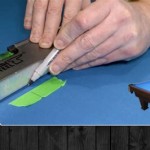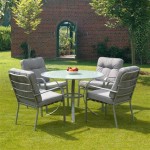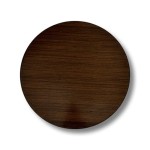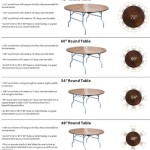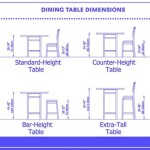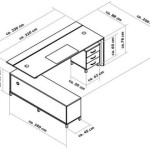Contemporary Extension Dining Tables: A Fusion of Functionality and Style
Contemporary extension dining tables represent a significant advancement in furniture design, seamlessly blending aesthetic appeal with practical functionality. These tables are specifically designed to adapt to varying space requirements, offering a versatile solution for modern living. Their adaptability makes them ideal for individuals and families who frequently entertain guests or who have limited dining space that needs to serve multiple purposes.
The core concept behind an extension dining table is its ability to increase or decrease in size. This is typically achieved through the incorporation of hidden leaves or mechanisms that allow the table to expand when needed and retract when not in use. This feature makes them invaluable for accommodating both intimate family meals and larger gatherings without permanently occupying a large footprint within the dining area.
The contemporary design aesthetic emphasizes clean lines, minimalist forms, and the use of modern materials. Compared to traditional dining tables, contemporary extension tables often feature sleeker profiles, less ornate detailing, and a focus on geometric shapes. Material choices commonly include hardwoods like oak, walnut, and maple, often combined with elements such as glass, metal, and engineered composites to achieve a sophisticated and durable finish.
Understanding Extension Mechanisms
A crucial aspect of contemporary extension dining tables is the mechanism by which they extend. Several different types of mechanisms exist, each with its own advantages and disadvantages in terms of ease of use, stability, and aesthetic integration. Recognizing the various methods available is vital when selecting a table that meets specific requirements.
One common type of extension mechanism is the butterfly leaf. In this design, the leaf is stored within the table itself, typically folding in half like butterfly wings. To extend the table, the tabletop sections are pulled apart, revealing the hidden leaf, which is then unfolded and locked into place. Butterfly leaves are often preferred for their convenience, as the leaf is always readily available and does not require separate storage.
Another prevalent mechanism involves separate leaves that are stored independently from the table. These leaves can be added or removed as needed to adjust the table's length. While this method requires finding storage space for the leaves when not in use, it offers greater flexibility in terms of the number of extensions that can be added, allowing the table to accommodate even larger groups.
Drop-leaf extension tables are a third option. These tables feature hinged leaves that can be folded down to reduce the table's size or raised to extend it. Drop-leaf designs are particularly well-suited for smaller spaces, as they can be easily transformed from a compact surface into a larger dining area. However, the stability of drop-leaf tables can sometimes be a concern, especially when heavily loaded.
More complex extension mechanisms involve geared systems that allow the table to extend smoothly and evenly. These systems often utilize metal tracks and gears to ensure that the tabletop sections move in unison, preventing misalignment and providing a more stable surface. While geared systems can be more expensive than simpler mechanisms, they offer a superior user experience and are often found in higher-end contemporary dining tables.
Materials and Construction
The materials used in contemporary extension dining tables significantly impact their aesthetic appeal, durability, and overall quality. The selection of materials often reflects the contemporary design emphasis on natural elements, clean lines, and lasting construction. Understanding the properties of different materials is crucial for making an informed purchase.
Hardwoods such as oak, walnut, and maple are commonly used for the table's frame and tabletop. These woods are prized for their strength, durability, and natural beauty. Oak is a particularly popular choice due to its distinctive grain pattern and resistance to wear and tear. Walnut offers a richer, darker tone that can add a touch of elegance to a dining space. Maple is a lighter-colored wood that is known for its smooth surface and ability to take stains and finishes well.
In addition to solid hardwoods, engineered wood products such as plywood and MDF are often used in the construction of contemporary extension dining tables. These materials offer several advantages, including greater stability, resistance to warping and cracking, and cost-effectiveness. High-quality engineered wood products are often indistinguishable from solid wood in terms of appearance and performance.
Metal is another common material found in contemporary extension dining tables, often used for the table's legs, frame, or extension mechanism. Steel and aluminum are popular choices for their strength, durability, and modern aesthetic. Metal components can be finished in a variety of colors and textures to complement the overall design of the table.
Glass is sometimes incorporated into contemporary dining table designs, either as a tabletop surface or as decorative accents. Glass tabletops can create a sense of openness and lightness in a dining space, while also being easy to clean and maintain. However, glass can be more fragile than other materials and may require careful handling.
The construction methods used in contemporary extension dining tables also play a crucial role in their quality and longevity. High-quality tables are typically constructed using solid joinery techniques, such as mortise and tenon joints, dovetail joints, and screw and glue construction. These techniques ensure that the table is strong and stable, even under heavy use.
Design Considerations and Style Integration
When selecting a contemporary extension dining table, it is important to consider how the table will integrate with the existing décor and style of the dining space. The table should complement the room's color scheme, furniture, and overall aesthetic. There are many design styles that fall under “contemporary,” so understanding these nuances is essential.
Minimalist Contemporary: Tables in this style are characterized by clean lines, simple forms, and a lack of ornamentation. They often feature a neutral color palette and are made from materials such as metal, glass, and light-colored wood. A minimalist table can create a sense of calm and serenity in a dining space.
Mid-Century Modern Contemporary: This style draws inspiration from the design trends of the 1950s and 1960s. Tables in this style often feature tapered legs, rounded edges, and warm wood tones. They may also incorporate elements of color and texture, such as patterned fabrics or accent pieces.
Industrial Contemporary: Industrial contemporary tables are influenced by the aesthetic of factories and warehouses. They often feature exposed metal frames, distressed wood surfaces, and a rugged, utilitarian look. These tables can add a touch of urban chic to a dining space.
Scandinavian Contemporary: Scandinavian contemporary tables are characterized by their simple, functional designs and use of natural materials. They often feature light-colored wood, clean lines, and a focus on comfort and practicality. Scandinavian tables can create a warm and inviting atmosphere in a dining space.
Beyond the style of the table itself, it is also important to consider its size and shape. The table should be appropriately sized for the dining space and should accommodate the number of people who will typically be using it. Rectangular tables are a classic choice for dining rooms, while round or oval tables can be a good option for smaller spaces or for creating a more intimate dining experience.
The choice of chairs to accompany the table is also an important design consideration. The chairs should be comfortable, stylish, and appropriately scaled for the table. Contemporary chairs often feature clean lines, minimalist designs, and materials such as metal, wood, and fabric. Mixing and matching different chair styles can add visual interest to the dining space, but it is important to ensure that the chairs complement the table and the overall décor of the room.
Lighting can also play a significant role in enhancing the aesthetic of a contemporary dining space. A well-placed chandelier or pendant light can create a focal point above the table, while sconces or recessed lighting can provide ambient illumination. Dimmable lighting can allow you to adjust the brightness to suit different occasions and moods.

Splendour Wooden Extending Dining Table Singapore Spaceman

Modern Contemporary Extension Dining Tables Alchemy Collections

Mondiana Extension Dining Table Hainantan Org Sg

Modern Walnut Oak Dining Table Extension Singapore
20 Expandable Tables You Ll Need For Social Gatherings 2modern

Elm Solid Rubber Wood Extension Dining Table Living Solution Pte Ltd

Skovby 27 Extendable Dining Table Sarasota Modern Contemporary Furniture

Modern Kitchen Tables Contemporary Room Service 360

Porada Bryant Round Extending Wooden Dining Table Contemporary Room Furniture Ultra Modern

Skovby 39 Dining Table Modern Furniture From Denmark

